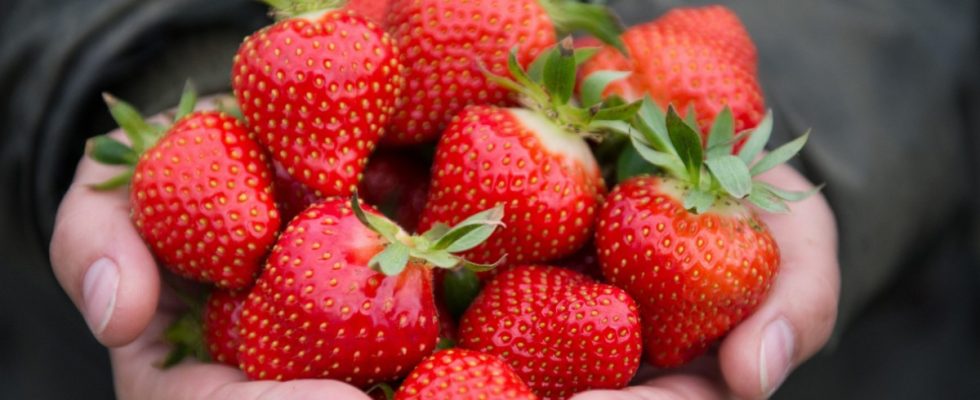Strawberries don’t have it easy, especially when they grow outdoors. It’s either too dry or too wet. In humid weather, a fungal attack can destroy an entire harvest in a very short time, and voracious snails love the sweet berries. This makes cultivation difficult without the use of pesticides.
Strawberries from conventional cultivation are always negative because they are contaminated with pesticides, including in a new study by the Bund für Umwelt und Naturschutz Deutschland (BUND) published on Monday. For this purpose, 19 strawberry samples from different retailers in Germany were examined in a laboratory. The result: According to the information provided, 15 samples had residues of a total of eight fungicides. A good half contained two or more active ingredients, and in three samples a total of four antifungal agents were detected.
An Ökotest study came to a similar conclusion in April, in which 14 samples were examined, most of which came from Spain. Only two products received the designation “good”. Ökotest recommended that consumers should only buy early strawberries from abroad in exceptional cases. The BUND data now show, however, that strawberries from Germany do not necessarily perform better in terms of exposure to chemical substances. Of a total of eleven strawberry samples from German production, only one contained no pesticides. For example, out of five samples of Spanish origin, two were uncontaminated.
On average, Germans eat 3.7 kilograms of strawberries per capita per year
Environmentalists are particularly concerned about the multiple burden. German strawberries had also been treated with up to four different agents, such as trifloxystrobin, which is considered to be reproductively harmful to humans, and difenoconazoles, which are classified as very toxic to birds and aquatic organisms. “The interaction between pesticides can increase their toxic effect,” says BUND pesticide expert Corinna Hölzel. “These dangers have so far not been sufficiently taken into account by the risk assessment.” The red fruits are particularly popular with children. On average, Germans eat a good 3.7 kilograms of strawberries per year and per capita. Society bears the costs of using pesticides, adds Hölzl. For example, municipal waterworks would have to filter out pesticide inputs from the groundwater at great expense.
Strawberries are susceptible to fungal diseases. For this reason, numerous fungicides are usually used as a preventive measure on conventionally farmed fields. According to environmentalists, they get into the air, into the soil, into the water and can still be detected years later. In organic farming, on the other hand, the toxic substances may not be used – but only a few organic producers grow strawberries at all. The share of local organic fruits in the total harvest is only between one and two percent.
BUND demands that the federal government at least halve the use of pesticides by 2030 and ban particularly dangerous pesticides. Better protection against multiple contamination of food is also necessary. With a petition to Federal Minister of Agriculture Cem Özdemir (Greens), the BUND wants to emphasize its demands.
Meanwhile, growing associations are warning that growing strawberries outdoors is no longer worthwhile for German growers. “Most of it will develop under foil and glass if it develops further,” said Thomas Bröcker from the Berlin-Brandenburg Horticultural Association recently. In Brandenburg, for example, the area has already shrunk significantly, also because it is becoming increasingly difficult for producers to find harvest helpers. Among the main suppliers of strawberries Spain is one of them in this country, and China is by far the most important producer of strawberries worldwide.

